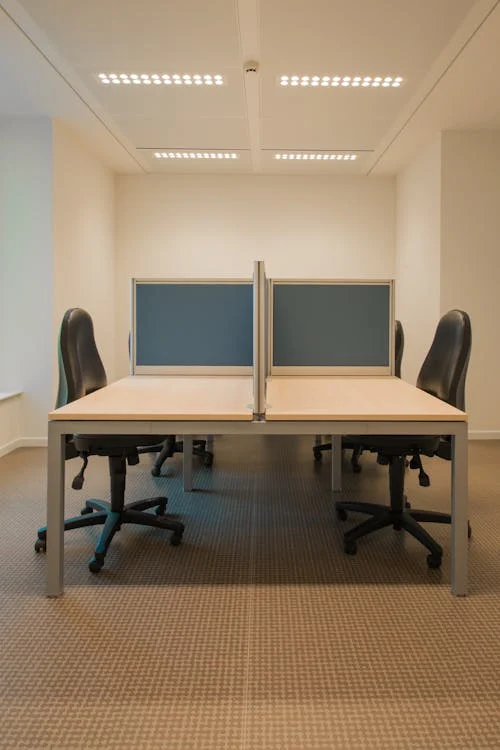Selecting the right office furniture is crucial for creating a functional, productive, and professional workspace that meets the specific needs and requirements of your industry. Different industries have unique workflows, work styles, and space considerations that influence furniture selection. This guide offers practical tips for choosing the best business furniture tailored to the needs of your industry, whether you work in healthcare, technology, finance, education, or any other sector.
1. Understand Industry Requirements
Begin by understanding the specific requirements and regulations governing office furniture in your industry. Certain industries, such as healthcare and education, may have strict guidelines regarding ergonomics, safety, and hygiene standards that dictate furniture selection. Familiarize yourself with industry-specific requirements to ensure compliance and suitability of office furniture choices.
2. Assess Workflows and Activities
Evaluate the typical workflows, tasks, and activities performed by employees in your industry to determine the most appropriate office furniture solutions. Consider factors such as collaboration needs, privacy requirements, storage demands, and technology integration to inform furniture selection. Tailor your choices to support the unique work processes and preferences of your industry.
3. Consider Space Constraints
Take into account the spatial constraints and layout considerations of your industry when selecting office furniture. Industries with limited space, such as startups or small businesses, may prioritize compact, modular furniture solutions that maximize space utilization and flexibility. Conversely, industries with larger office spaces, such as corporate headquarters or government agencies, may have more flexibility in furniture selection and layout.
4. Prioritize Functionality and Ergonomics
Prioritize functionality and ergonomics when choosing office furniture for your industry to promote employee comfort, health, and productivity. Select ergonomic chairs, adjustable desks, and supportive seating options that accommodate prolonged periods of sitting or standing. Ensure that furniture designs align with the ergonomic needs and preferences of employees to minimize the risk of musculoskeletal issues and enhance overall well-being.
5. Reflect Industry Aesthetics
Consider the aesthetic preferences and design trends prevalent in your industry when selecting office furniture. Different industries may have distinct design aesthetics that reflect their brand identity, values, and target audience. Choose furniture styles, colors, and finishes that resonate with the visual language and culture of your industry while maintaining professionalism and functionality.
6. Account for Technology Integration
Integrate technology seamlessly into office furniture solutions to support the digital needs of your industry. Consider factors such as cable management, power outlets, and connectivity options when selecting desks, tables, and workstations. Ensure that furniture designs accommodate the use of laptops, monitors, peripherals, and other electronic devices commonly used in your industry.
7. Customize for Industry-Specific Needs
Customize office furniture to meet industry-specific needs and preferences, especially in sectors with specialized requirements or unique workflows. For example, healthcare facilities may require medical-grade furniture with antimicrobial properties, while creative agencies may prefer modular, customizable furniture that fosters collaboration and creativity. Work with furniture manufacturers or suppliers to tailor solutions to your industry’s specific demands.
8. Emphasize Durability and Quality
Invest in durable, high-quality office furniture that can withstand the demands of your industry’s daily operations and environment. Industries with high traffic areas or heavy use, such as hospitality or manufacturing, require furniture constructed from robust materials that resist wear, tear, and damage. Choose furniture pieces with sturdy construction, reliable mechanisms, and long-lasting finishes to ensure longevity and performance.
9. Budget Wisely
Consider budget constraints and cost considerations when selecting office furniture for your industry. Balance quality, functionality, and aesthetics with budgetary constraints to find the best value for your investment. Explore cost-effective options, such as pre-owned or refurbished furniture, bulk purchasing discounts, or leasing arrangements, to maximize your budget without compromising on quality or style.
10. Seek Industry-Specific Expertise
Consult with industry experts, interior designers, or furniture specialists who understand the unique needs and challenges of your industry. Tap into their knowledge and experience to gain insights into industry-specific furniture trends, best practices, and solutions that optimize workspace design and functionality. Collaborate with professionals who can provide tailored recommendations and guidance based on your industry requirements.
Conclusion
Choosing the best office furniture for your industry requires careful consideration of industry requirements, workflows, space constraints, functionality, aesthetics, technology integration, customization options, durability, quality, budget, and expert advice. By understanding the unique needs and preferences of your industry and selecting office furniture solutions that align with these considerations, you can create a workspace environment that enhances productivity, collaboration, and employee satisfaction. Invest in office furniture that reflects the values, culture, and identity of your industry while supporting the practical needs and well-being of your employees.
